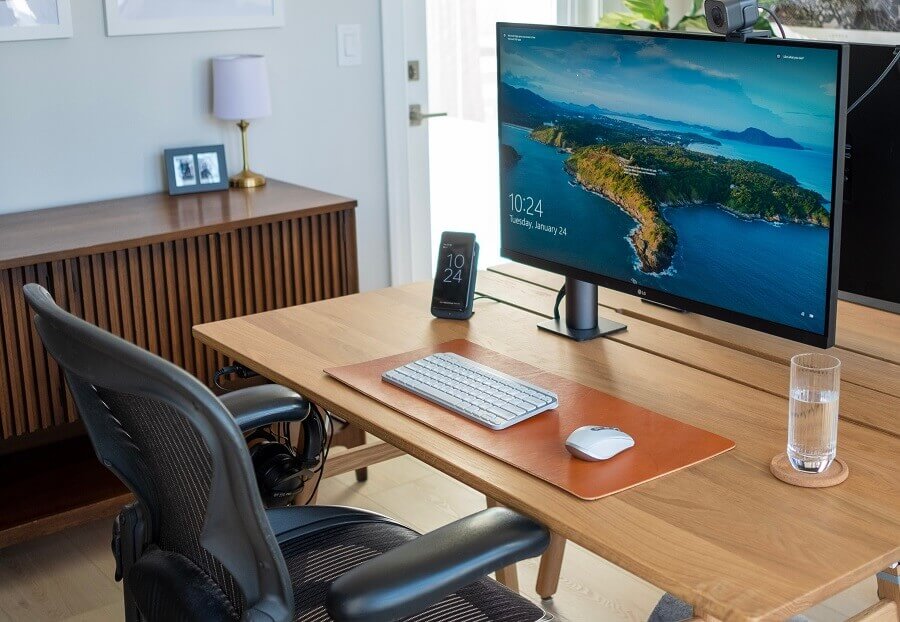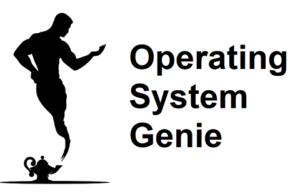It’s possible to see what percentage of your GPU is being utilized using the Windows Task Manager. The utilization percentage fluctuates but often stays flat lined. Today, I will explain if your GPU is supposed to be at 50% and if it’s good.
Your GPU is not supposed to be at 50%. But, when your computer is idle it can be around 50%. GPU utilization percentage should be as high as possible. Ideally, 100%. But, this is not always possible, and is limited by the speed of the CPU.
Below, I will cover:
- Why your GPU is only using 50%
- How to increase GPU utilization
- What if you have low GPU usage and no CPU bottleneck
- What is good GPU utilization and why
Let’s get into it!
Why Your GPU is Only Using 50%

There are 3 common reasons why your GPU is only using 50%. These are:
- The CPU is too slow for the GPU
- The GPU is frame rate limited in the BIOS settings
- The game is not demanding enough
The GPU can only go as fast as the CPU can process and send data to it. A high end GPU will be more than capable of keeping up with a mid-range CPU. And for that reason the GPU utilization percentage can never get close to 100% – where it ideally should be.
A quick fix to look into is turning up the graphics settings of your game. If they are already on the max settings, then the GPU may be limited in the BIOS settings.
There are a few very popular GPU brands such as NVidia. Each graphics card is a little bit different, and as a result, how to access the settings varies. For example, for MSI graphics cards you use MSI Afterburner. Which is a special software to access the advanced settings.
The best thing to do is do a Google or Youtube search for how to check the frame rate limiting settings for your make and model of graphics card.
How to Increase GPU Utilization
There are a range of myths out there about how to increase the utilization of a GPU. As well as, some methods that have been shown to work in independent tests. Here are the most common ones.
- Get more RAM – doesn’t work
- Get faster RAM – doesn’t work
- Adjust the power settings – about a 1% improvement
- Get additional sticks of RAM – minor improvements
- Overclock the CPU – minor improvements
A few sources suggest getting more and faster RAM. For example, if you have DDR4 RAM, then get DDR5 RAM. Also, if you have 8GB of RAM, then get 16GB of RAM.
However, I analyzed this in detail, and found through testing that the RAM speed, and the amount of RAM you have has no effect on GPU utilization percentage, or FPS.
I showed the results in this article about whether low RAM affects GPU performance.
The last most commonly suggested fix that doesn’t work is to adjust the power settings in Windows.
Or, on the software for our graphics. For example, if it’s on balanced power, change it to maximum performance. But, independent tests have shown that this only provides a 1% increase in GPU utilization percentage.
On the other hand, tests performed by Ancient Gameplays Youtube channel found that getting additional sticks of RAM and overclocking the CPU does provide a 10% to 20% improvement in FPS.
Which is directly proportional to GPU utilization percentage. So, if you improve the FPS by 5%, you should see a 5% increase in GPU utilization.
Getting 2 sticks of RAM when you only have one provides about a 5% increase in GPU utilization. But, it is not applicable to all computers. You can do this if, for example, your computer has one 8GB stick of RAM, or one 16GB stick of RAM. In that case getting two 4GB sticks, and replacing your one 8GB stick with it will work.
Or, getting two 8GB sticks, or four 4GB sticks to replace your 16GB of RAM. In my opinion, this is a little bit involved, and in some cases you may decide the extra 5% increase in GPU utilization isn’t worth it.
As you may know, overclocking is where you change the system settings on your CPU so that it runs faster.
However, it’s a little bit tricky to do, and is only well known amongst gamers. Therefore, most people never do it. It’s kind of like a hidden setting. Overclocking your CPU has the biggest impact of GPU utilization if your GPU is much better than your CPU.
An ideal computer would have a CPU that matches the GPU, or has a GPU that is slightly above the CPU. If the CPU is significantly faster than the GPU, performance can be improved by getting a faster GPU.
Whereas, if the GPU is significantly faster than the CPU. The GPU won’t be able to run at 100%, and performance can be improved by getting a faster CPU.
Low GPU Usage No CPU Bottleneck
In some cases, the CPU is well matched to the GPU, and therefore, it’s clear the CPU is not limiting the performance of the GPU. If you still have a low GPU usage percentage even though the CPU is not the bottleneck, here is why it happens.
In general, the GPU is frame rate limited in the BIOS settings or settings on your graphics card. Otherwise, turn the in game graphics settings up and monitor if GPU usage percentage increases. Provided, you’ve tried those two things you should contact the support team of our GPU manufacturer.
What is Good GPU Usage Percentage
A graphics card, commonly called a GPU is responsible for the position and color of every single pixel on the display. Whether it’s a monitor, TV, or projector. When the screen is displaying complex and fast moving images, the GPU needs to work harder, and have a higher GPU utilization percentage.
But, a good GPU usage percentage is 100% or close to it when playing a graphics intensive game, or displaying something graphics intensive on the screen. Whereas, when idle the GPU usage percentage should be 50% or lower.
